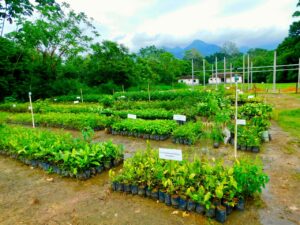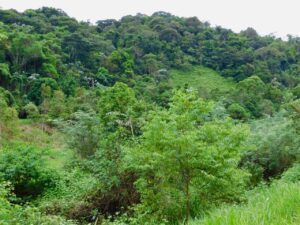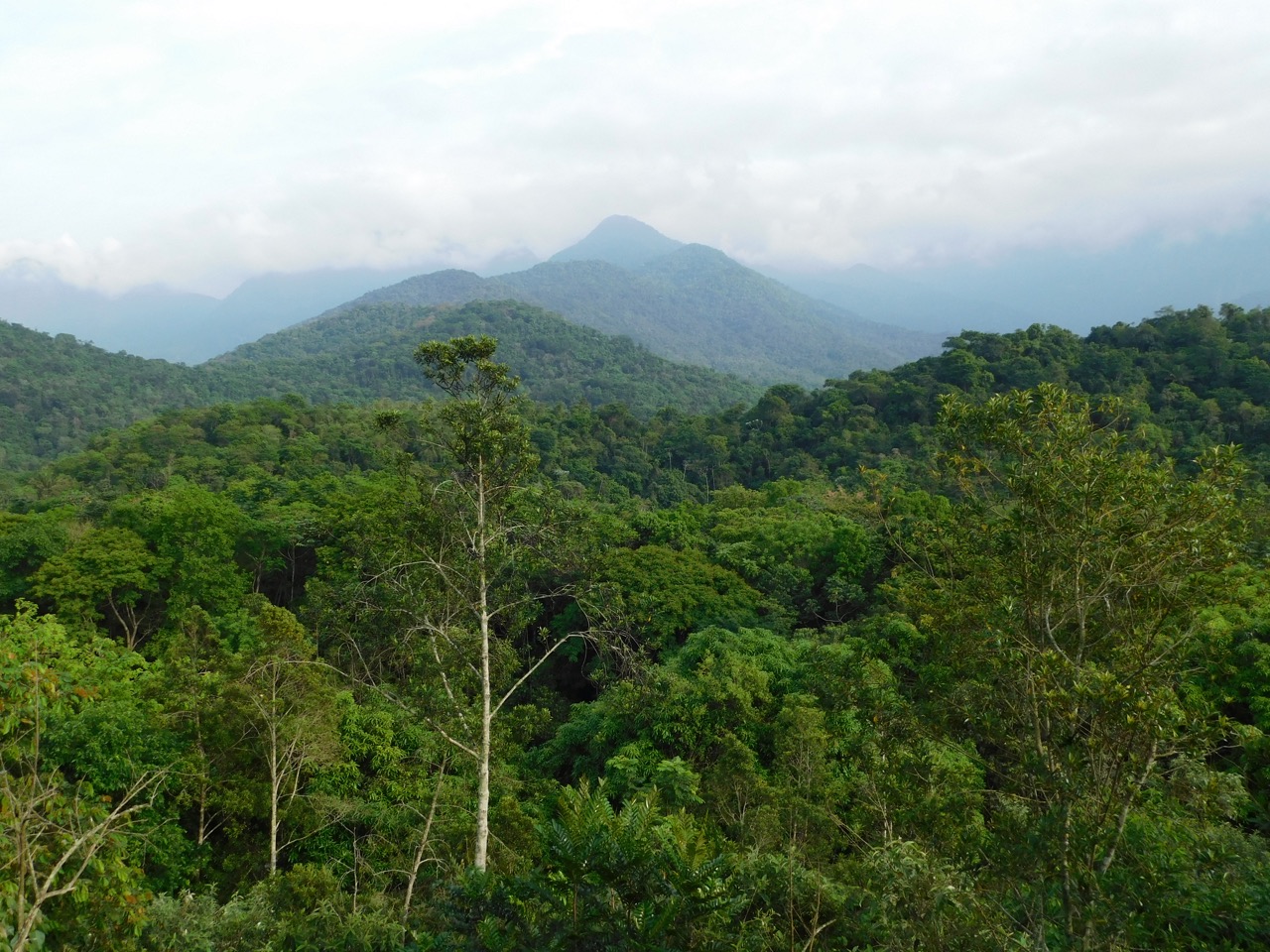New research reveals the best bets for restoring tropical rainforests
By Robin Chazdon | The lush green belt of moist tropical forests that once hugged the equator in the Americas, Africa, Indonesia, and Southeast Asia is turning brown. Some 50 percent of the original forests are pastures or cropland; and 30 percent of remaining forests have been heavily damaged by fires, logging, hunting, and fragmentation.
Tropical forests are the planet’s multi-taskers. They store large amounts of carbon in the trunks, leaves and roots of trees, and they provide food, fiber and fuel for people and habitats and migration routes for animals. They keep soil healthy, and they purify and regulate water supplies and air quality.
When they are gone, they are sorely missed and cannot be replaced.
But they can be restored.
 Restoring forests involves more than just replanting trees. It is about developing a long-term partnership with nature based on participation, investment, and interaction with people. Bringing forth new thriving and diverse forests is one of our best defenses against rising global temperatures.
Restoring forests involves more than just replanting trees. It is about developing a long-term partnership with nature based on participation, investment, and interaction with people. Bringing forth new thriving and diverse forests is one of our best defenses against rising global temperatures.
We can’t afford to restore all the lost forests, nor should we aspire to. We simply don’t have the finances and the land involved is already claimed for other uses, such as crop, meat, or wood production.
So which forests do we attempt to bring back? It’s not an easy question. The answer involves weighing the benefits and the risks, which could include restoring a forest that is likely to be razed by fire or that has a low chance of regaining its native diversity.
My team of researchers has brought us one step closer to determining best bets for restoration of tropical rainforests. Our new study is the first to identify in precise detail the world’s reforestation hotspots—those that could provide the highest collective benefit at the lowest cost and risk. Similar approaches can be used to identify restoration hotspots for other types of forest and non-forest systems.
Using high-resolution satellite imagery and the latest peer-reviewed research, we assessed lands where forests once stood to pinpoint which could deliver four forest benefits—biodiversity, climate change mitigation and adaptation and water security—at the least cost, risk and likelihood of losing the restored forests in the future.
We found that worldwide, restoration hotspots encompassed a total area of over 100 million hectares, larger than the areas of Sweden and Spain combined. These hotspots are distributed across the global tropics, with the largest areas in Brazil, Indonesia, Madagascar, India and Colombia. We also found that forests in eight countries in Africa, including Rwanda, South Sudan and Madagascar, could deliver a host of benefits if restored.
With our new study, governments, investors and others who have signed on to the Bonn Challenge, New York Declaration on Forests and other pledges to restore forests can now determine exact locations where restoring rainforests is most viable, enduring and beneficial.
 We already know that forest restoration–together with the protection of natural, old-growth forests–is one of the most cost-effective and readily available solutions to current climate and environment woes. Together with efforts to rapidly decrease fossil fuel use, reforestation is essential for achieving climate goals.
We already know that forest restoration–together with the protection of natural, old-growth forests–is one of the most cost-effective and readily available solutions to current climate and environment woes. Together with efforts to rapidly decrease fossil fuel use, reforestation is essential for achieving climate goals.
With this new information on hand, we can bring forth tropical forests from and for the earth.


